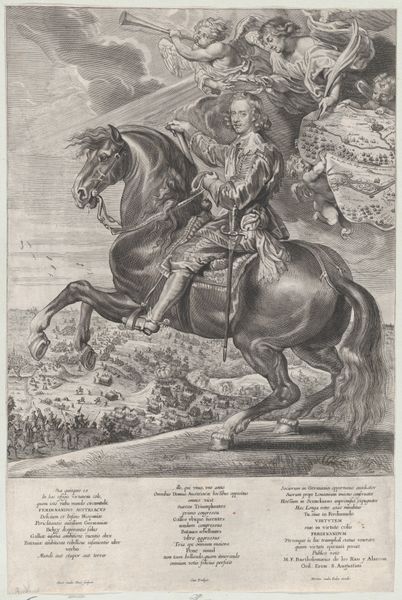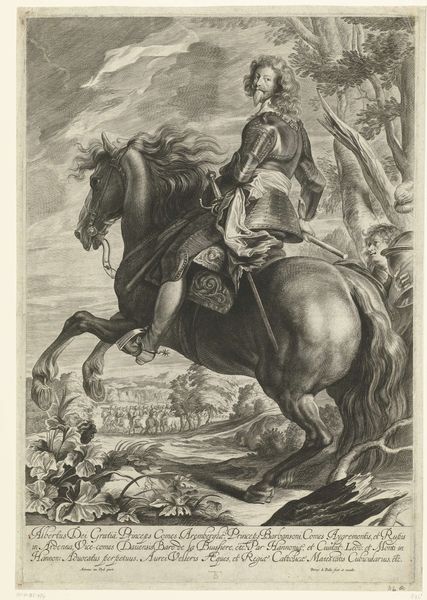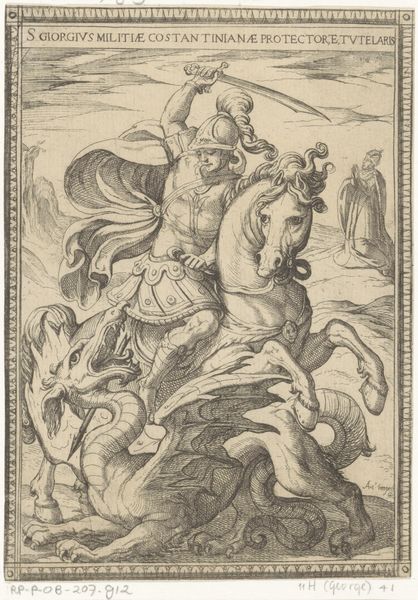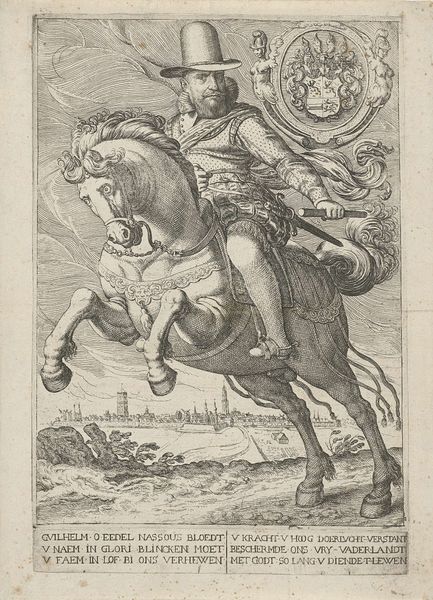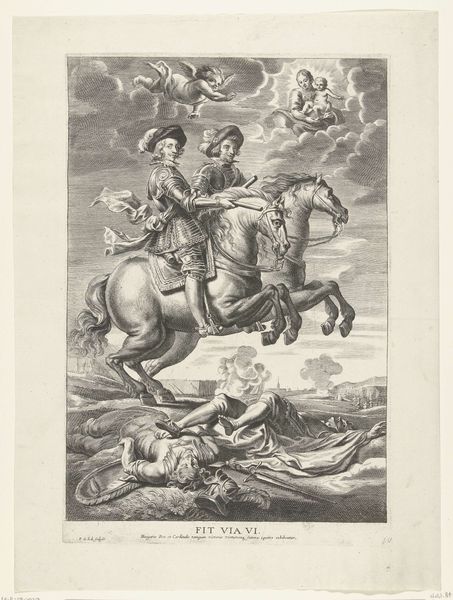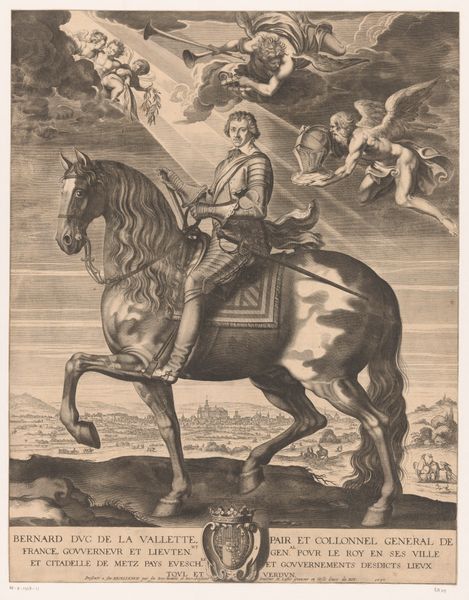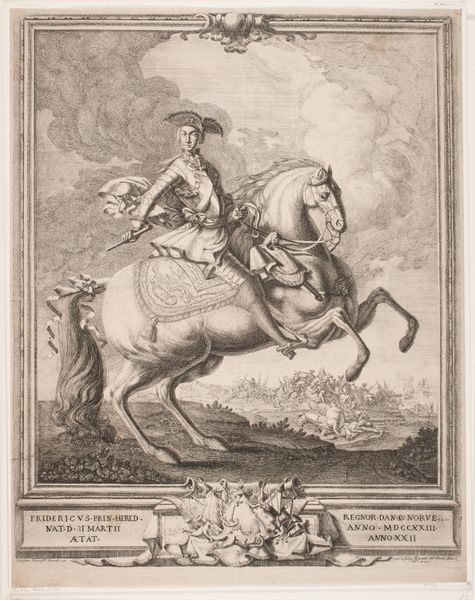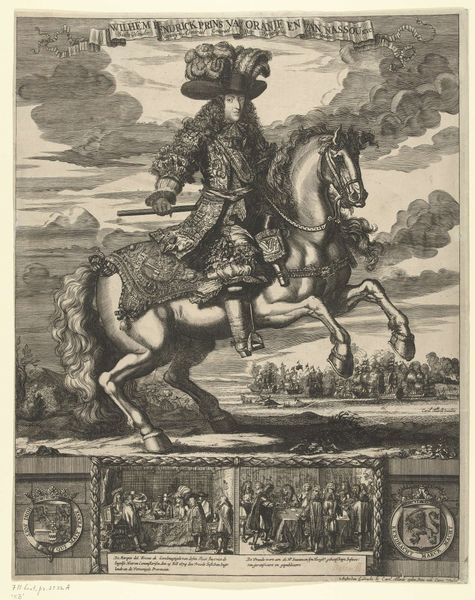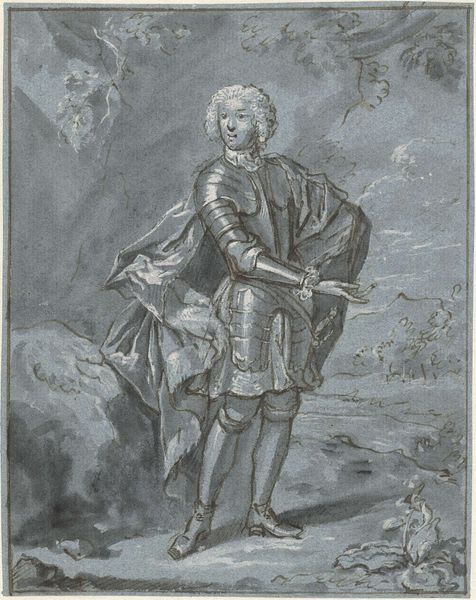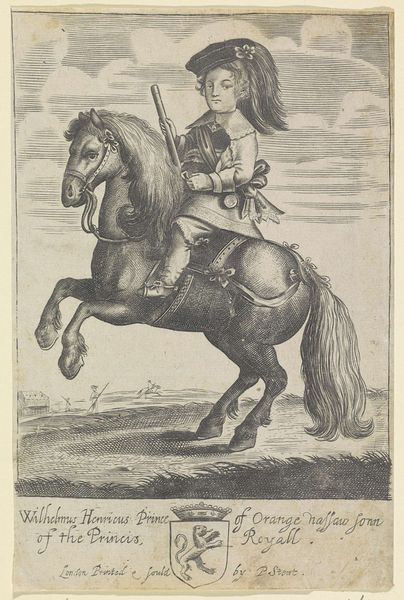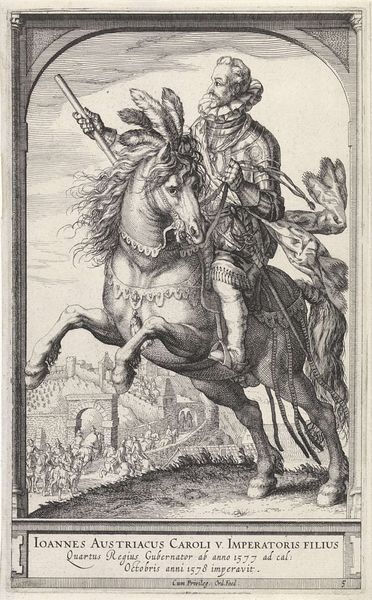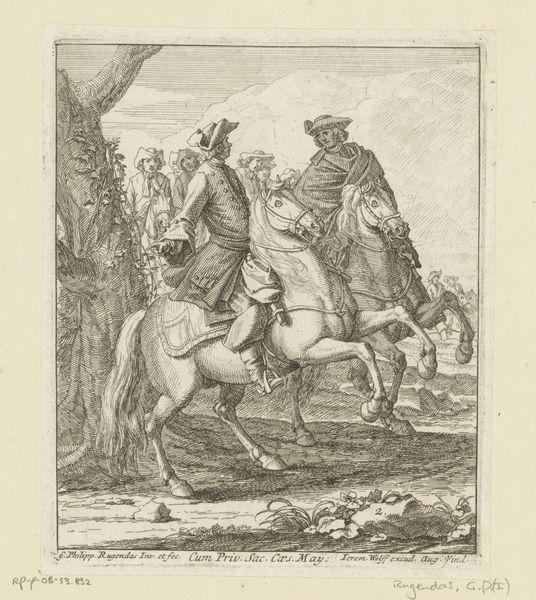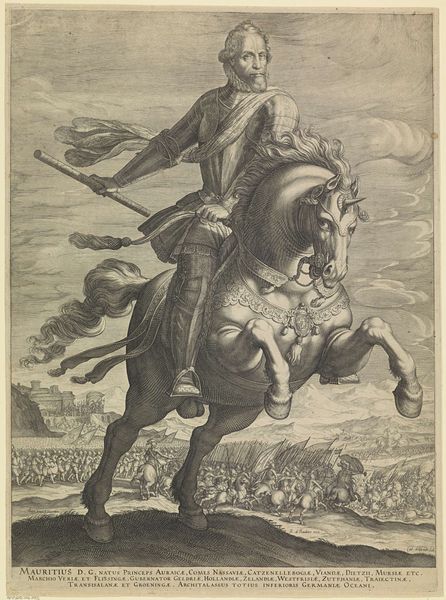
drawing, print, paper, engraving
#
portrait
#
drawing
#
baroque
# print
#
paper
#
pencil drawing
#
history-painting
#
engraving
Dimensions: 450 × 323 mm (image); 483 × 327 mm (plate); 487 × 332 mm (sheet)
Copyright: Public Domain
Paul Pontius made this print of Ferdinand of Austria, likely in the 17th century, using engraving. It speaks to a very specific kind of propaganda that was common at the time. Note how the image constructs meaning through its visual codes, cultural references, and historical associations. Ferdinand is depicted on horseback, a traditional symbol of power and authority. But above him is an angel, and a regal bird of prey. Below is a battle scene. What do these figures mean? We have to consider the social conditions that shaped the creation of this image. Ferdinand of Austria was a cardinal and governor of the Spanish Netherlands. The print would have been commissioned to enhance his public image and legitimize his rule during a period of political and religious conflict. Understanding this artwork requires looking at the institutional history of the Catholic Church, the political dynamics of the Habsburg empire, and the visual culture of the Baroque period. Examining these resources helps us understand the role of art in shaping social perceptions and political power.
Comments
No comments
Be the first to comment and join the conversation on the ultimate creative platform.
